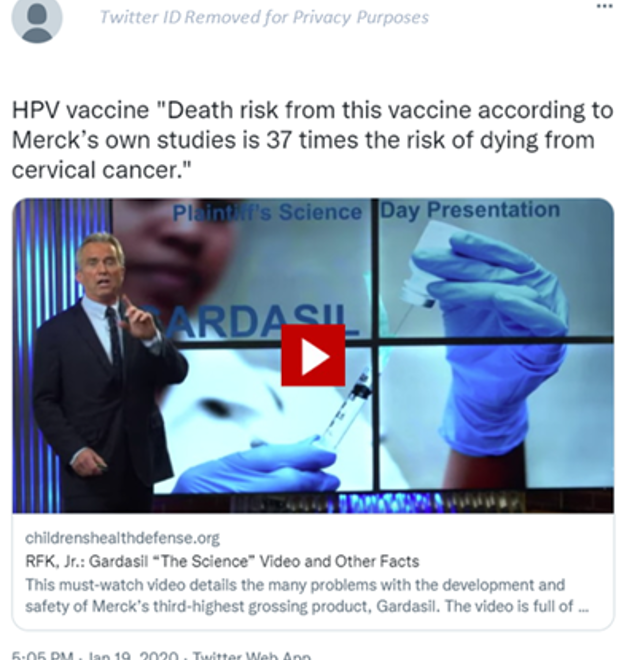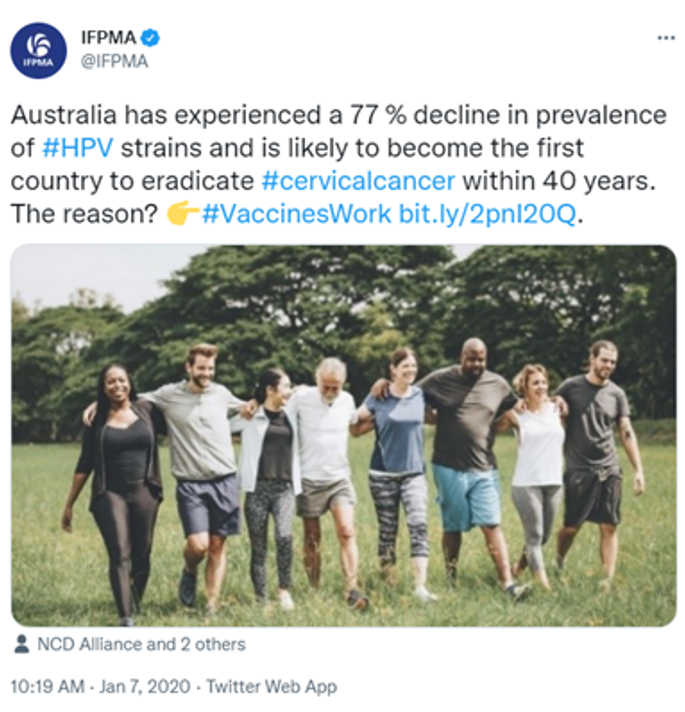According to the Indiana Immunization Coalition, nearly 80 million Americans are currently infected with some form of human papillomavirus (HPV), the most common sexually transmitted infection in the United States that is associated with the development and pre-development of six types of cancer. Although a vaccine is widely available, misinformation about its effects can hinder vaccination efforts.
A new study from researchers at Indiana University and the University of Pennsylvania, published in the Journal of Behavioral Medicine, sought to understand how misinformation on Twitter affects HPV vaccination in order to lay the groundwork for developing interventions that combat its negative effects. They found that 24 percent of tweets about HPV contained some form of misinformation, and those tweets were shared at a rate of almost six times higher than educational or supportive tweets about the vaccine.
“One thing we can no longer ignore is the role that social media and misinformation is playing in parents’ perceptions of vaccination,” said Katharine Head, an associate professor in the IU School of Liberal Arts and an expert in health communication. “Parents who are exposed to misinformation in online places express more concern and are less likely to get their kids vaccinated. Health communicators, public health experts and medical professionals have to be ready and able to fight the battle in these online places because it impacts what is happening in clinical spaces.”
The researchers evaluated the type, frequency and audience engagement – measured in retweets – of 3,876 tweets using the #HPV hashtag from December 15, 2019, through March 31, 2020. Each tweet was coded as to whether it contained misinformation (any tweets containing false information) or was supportive/educational (containing information like vaccination practices or other educational material).
False adverse side effects were the most common theme shared in the one in four tweets containing misinformation, followed by the theme of mandatory vaccination, though very few states in the U.S. require it. The remaining 76 percent of tweets were supportive or education focused.
In terms of audience engagement, the researchers found that misinformation tweets had an average of 24 retweets, with supportive or educational tweets averaging just 4.4.
“Our findings have important implications for our public health effort to reduce vaccine hesitancy,” said Melanie Kornides, an assistant professor in the School of Nursing at the University of Penn and lead author on the study. “It is critical for us to develop and test interventions tailored to addressing the misinformation that is most likely to be shared and most likely to influence vaccination behaviors. Our study took the necessary first step in the process by identifying that misinformation for HPV vaccination.”
The CDC currently recommends HPV vaccination for children who are 11 or 12-years-old, though anyone through age 26 may be vaccinated if they were not at a younger age. While vaccination does not treat existing HPV infections or diseases, it does prevent new ones, so the vaccine works best before a person is ever exposed to HPV. According to Head, this vaccine has been shown to work, with some places high in vaccination coverage seeing not only HPV rates drop, but also cancer rates.
The researchers say this study, and their continuing work to track tweets about HPV vaccination, will help inform work on developing messages, tactics and corrective interventions to combat misinformation about the vaccine. They hope to ultimately help parents feel empowered to know the truth and make the right health decisions for their child.




